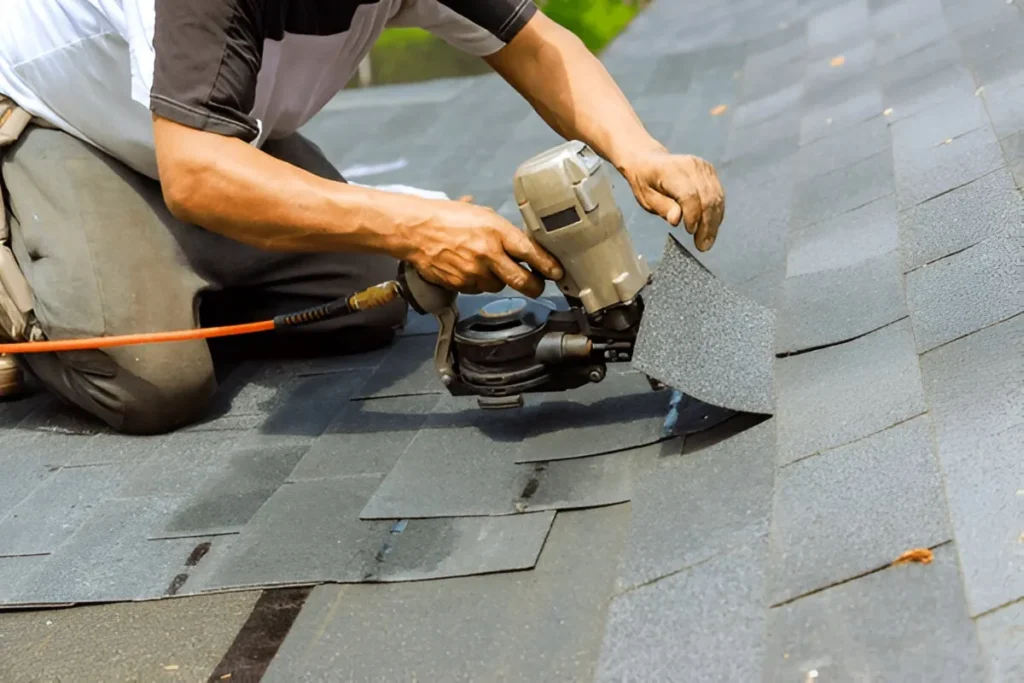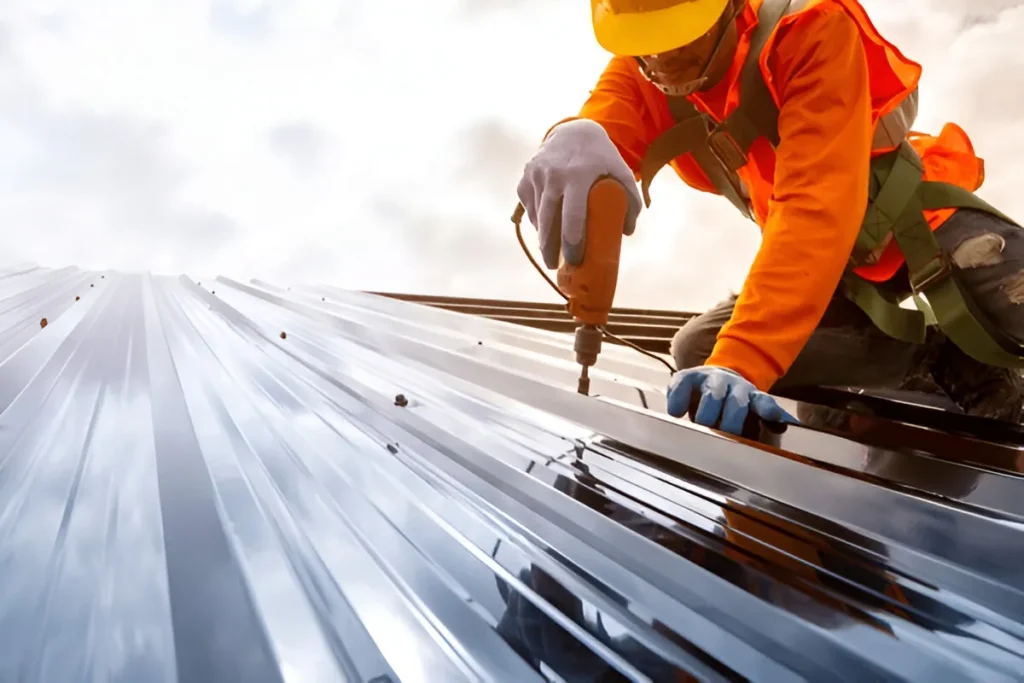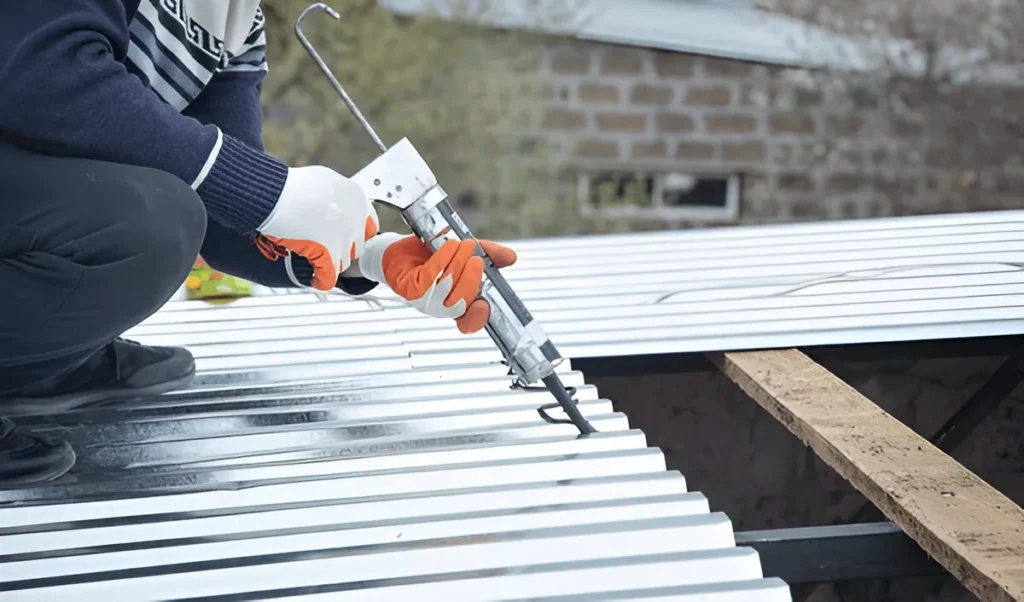Roof Inspection
Leaks, Creaks, and Sneaky Risks: What Roof Inspection Reveal
Your roof works tirelessly to protect your home and everything in it from Mother Nature’s unpredictable wrath. Yet, how often do we stop to think about its condition? Here’s a startling fact to consider: nearly 25% of homeowners experience roof leaks each year. That’s thousands of households facing water damage, mold growth, and costly repairs simply because their roofs weren’t inspected in time.
Regular roof inspection aren’t just about keeping your roof looking great; they’re essential for preventing hidden hazards, extending your roof’s lifespan, and saving you money in the long run. This post will explore the anatomy of a roof, the often-overlooked issues inspections reveal, and how professionals like Iron Bull Roofing can help you keep your roof in top shape.
The Anatomy of a Roof: More Than Meets the Eye
A roof is more than just a protective cover over your head; it’s a sophisticated system designed to shield and comfort your home. Understanding its components and functionality can enhance appreciation and maintenance.
Components Breakdown
- Shingles or Tiles: These are the visible layer, providing the first line of defense against weather and water damage. They come in various materials and styles, offering both protection and aesthetic appeal.
- Flashing: Critical for keeping water out, flashing consists of thin metal sheets strategically placed around chimneys, vents, and skylights to prevent leaks.
- Underlayment: Positioned directly beneath the shingles, this barrier is key in providing waterproofing, offering an extra layer of defense against moisture when shingles are compromised.
- Gutters and Downspouts: Essential for directing water away from the roof and foundation, these components help prevent flooding and soil erosion by managing runoff.
- Ventilation Systems: Ensuring proper airflow is vital for preventing moisture buildup and extending the roof’s lifespan. Good ventilation maintains a balanced temperature, reducing the risk of damage.
Functionality and Harmony
Each part of a roof plays a unique role—shingles guard against the elements, flashing secures vulnerable points, and underlayment provides backup protection. Gutters manage water flow, and ventilation maintains structural health. When these components work in harmony, they form a resilient system that not only protects your home but also enhances its longevity and efficiency. Understanding your roof’s anatomy is key to ensuring it performs its best for years to come.

Professional Roof Inspection
Identifying Common Roofing Issues through Inspections
Signs of Damage
First, be on the lookout for missing or cracked shingles. These often signal potential water penetration, which can lead to more severe damage if not addressed promptly. Leaks, another critical issue, usually appear as water stains on your ceilings or walls. Ignoring them can result in extensive damage. Additionally, sagging areas on your roof indicate structural weaknesses that require immediate attention to prevent further complications.
Environmental Factors
Roofs endure constant exposure to harsh environmental conditions. Hailstorms can dent metal roofing, while strong winds have the potential to tear off shingles. Intense heat may cause roofing materials to warp, compromising their protective abilities. Over time, even the natural aging process degrades the roof’s capability to shield your home from the elements.
Safety Hazards
Roofing issues extend beyond structural damage, presenting various safety hazards. Mold growth is a common concern, as it can infiltrate air systems and pose health risks to your household. Loose tiles, meanwhile, can become dangerous projectiles during storms, threatening both people and property.
The Crucial Role of Regular Roof Inspections
Preventive Maintenance
Regular roof check-ups are your first line of defense against costly roof repairs. By addressing minor issues like sealing small cracks early, you can avoid expensive water damage in the future. Think of it like nipping problems in the bud, saving you both time and money.
Early Detection
Spotting issues such as damaged seams or curled shingles early can save you from a full roof replacement. The sooner you identify these problems, the more manageable and affordable the repairs. Early detection is key to minimizing financial impact and maintaining your roof’s integrity.
Insurance Benefits
Maintaining your roof with regular inspections could also benefit your homeowner’s insurance. Many policies require proof of regular maintenance to approve claims. By keeping a documented history of inspections, you’re more likely to have claims approved if an unexpected disaster occurs.
How to Conduct a Comprehensive Roof Inspection
Ground-Level Observation
Begin by walking around your home’s perimeter to spot visible issues like missing shingles, sagging sections, or clogged gutters. These can be signs of underlying problems that need prompt attention. If you’re comfortable with heights, consider using a sturdy ladder to get a closer look at the roof surface for more subtle signs of wear and tear.
Call in the Professionals
While DIY inspections are useful, hiring a professional roofer can be invaluable. Equipped with industrial-grade tools and expertise, professionals can identify hazards invisible to the untrained eye. Their thorough assessment ensures that no detail goes unnoticed, giving you peace of mind.
Schedule Regular Check-Ups
Regular inspections are key to maintaining your roof’s health. Aim to have your roof checked annually and after severe weather events such as hailstorms or hurricanes. These regular evaluations not only help prevent costly repairs but may also satisfy insurance requirements.
Keep Detailed Records
Maintain detailed records of all inspection findings. These documents serve as proof of maintenance and can be crucial for insurance claims or when selling your home. Keeping a log of past inspections provides a valuable history of your roof’s condition and any work performed.

Professional Roof Inspection Expert
Sneaky Risks: What Roof Inspections Might Uncover
Pest Infestations
Small gaps in shingles or flashing can become entry points for pests like birds, squirrels, or termites. Over time, these uninvited guests can cause considerable damage by burrowing into wooden structures or insulating materials.
Improper Installation or Repairs
Unfortunately, not all roofing contractors follow best practices. Inspections often uncover poor-quality repairs or shortcuts taken during original installations, such as inadequate sealing or mismatched materials.
Environmental Damage
Overhanging tree branches not only scrape roofs but also drop debris that can clog gutters and add unneeded weight. Pollution in urban areas also accelerates material deterioration, especially with acid rain.
Why Professional Roof Inspections Matter
What Happens During an Inspection?
When you hire a professional, expect a thorough examination of all roof components—from shingles and flashing to underlayment and structural support. Professionals utilize advanced technology, such as drones for hard-to-reach spots and specialized cameras that detect hidden moisture, ensuring no issue goes unnoticed.
DIY vs. Professional Inspections
While a DIY inspection may help identify obvious issues like missing shingles, it lacks the depth and expertise a professional brings. Professionals can spot subtle signs of trouble, such as improperly installed flashing or the beginnings of roof rot, which could escalate into significant problems if left unaddressed.
How Often Should You Get Inspections?
Regular inspections are key to preventing costly repairs. As a rule of thumb, aim for a professional inspection every two to three years. Additionally, it’s wise to schedule extra inspections after severe weather events to catch any storm-related damage early.
Iron Bull Roofing: Your Reliable Partner in Roof Inspections
Why Iron Bull is the Right Choice
Experience matters. Our seasoned roofing professionals bring over 20 years of hands-on experience, understanding the intricacies of different roofing materials and styles. This expertise allows us to create a custom inspection plan that meets your unique needs, ensuring your roof’s longevity and performance.
Comprehensive Inspection Services
Iron Bull Roofing offers a wide range of inspection services. Whether you need a routine check or a thorough assessment after a storm, our team leaves no stone unturned. We meticulously examine every aspect of your roof, identifying potential issues before they become costly problems.
The Advantages of Choosing Iron Bull
Choosing Iron Bull means receiving detailed inspection reports and expert recommendations tailored to your roof’s needs. Our commitment to customer satisfaction is unwavering, making us the preferred choice for homeowners seeking peace of mind. Our reputation is built on trust, quality service, and a dedication to ensuring your home remains safe and secure.
Partner with Iron Bull Roofing and experience the difference in roof care and maintenance. Let us help you protect one of your most valuable investments—your home.

Roof Inspection & Repairing Service
Preventative Maintenance: Keeping Your Roof in Shape
Routine Maintenance Tips
Simple actions can keep your roof performing at its best:
- Clean gutters regularly.
- Remove debris like branches or leaves.
- Inspect after storms for loose materials.
Seasonal Checklists
- Spring: Clear winter buildup from gutters.
- Summer: Check for heat damage like cracking or warping shingles.
- Fall: Remove leaves and trim tree branches.
- Winter: Look for icicles, which indicate poor gutter drainage.
Benefits of Regular Maintenance
Staying proactive extends your roof’s life, ensures its efficiency, and saves money in the long run. Regular maintenance can prevent costly repairs and roof replacements. By spending a little time and money on preventative measures, you can avoid major expenses down the road. Additionally, keeping your roof in good condition can increase the value of your home and improve its curb appeal.
Conclusion
Regular roof maintenance is essential for ensuring the longevity and efficiency of your roof. By performing simple tasks such as cleaning gutters, inspecting for damage, and keeping vegetation away, you can save yourself from costly repairs and replacements in the future. It is important to stay proactive and address any potential issues as soon as they arise to prevent them from turning into larger problems. By taking care of your roof, you are not only protecting your investment but also improving the overall value and appearance of your home. So don’t neglect your roof – make sure to schedule regular maintenance checks to keep it in top condition! Now that you have a better understanding of the importance of regular roof maintenance, let’s take a look at some specific steps you can take to keep your roof in good shape.
https://www.google.com/maps?cid=1166087704919324729
